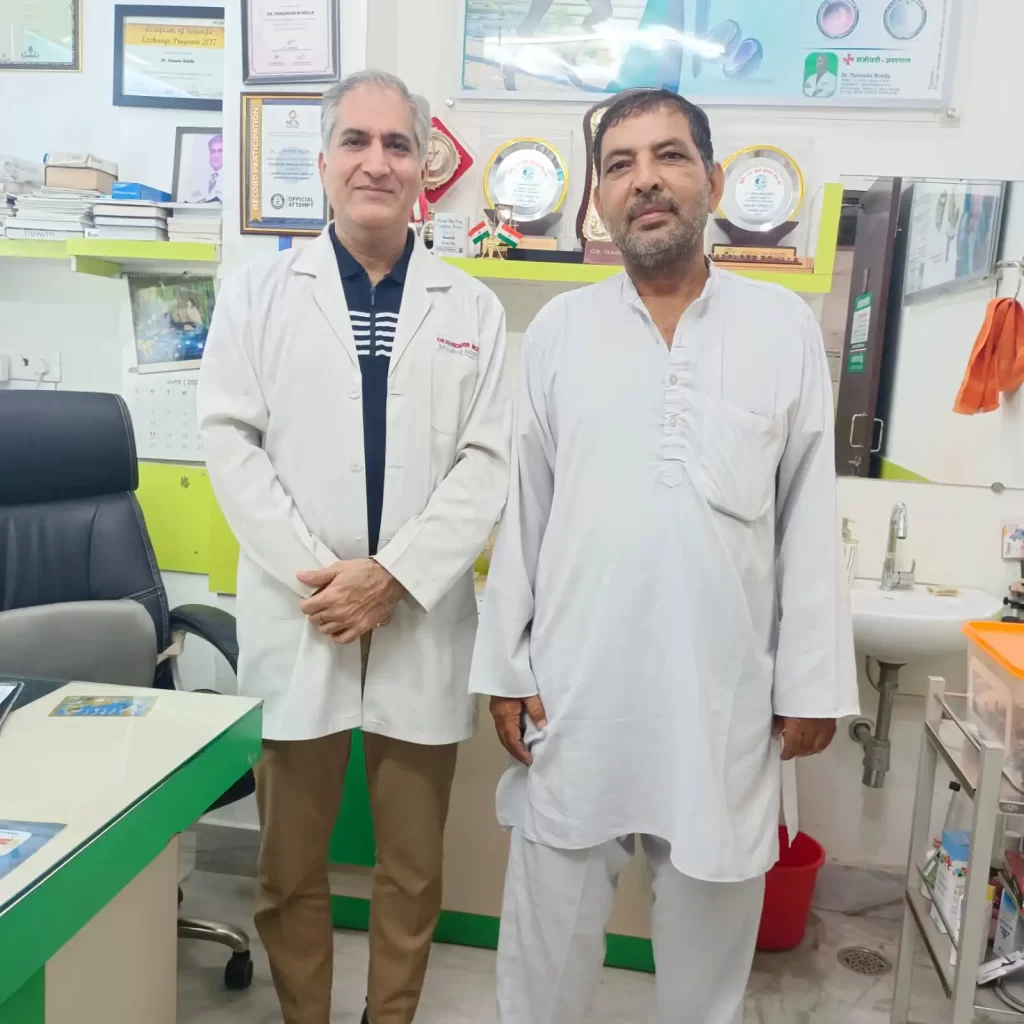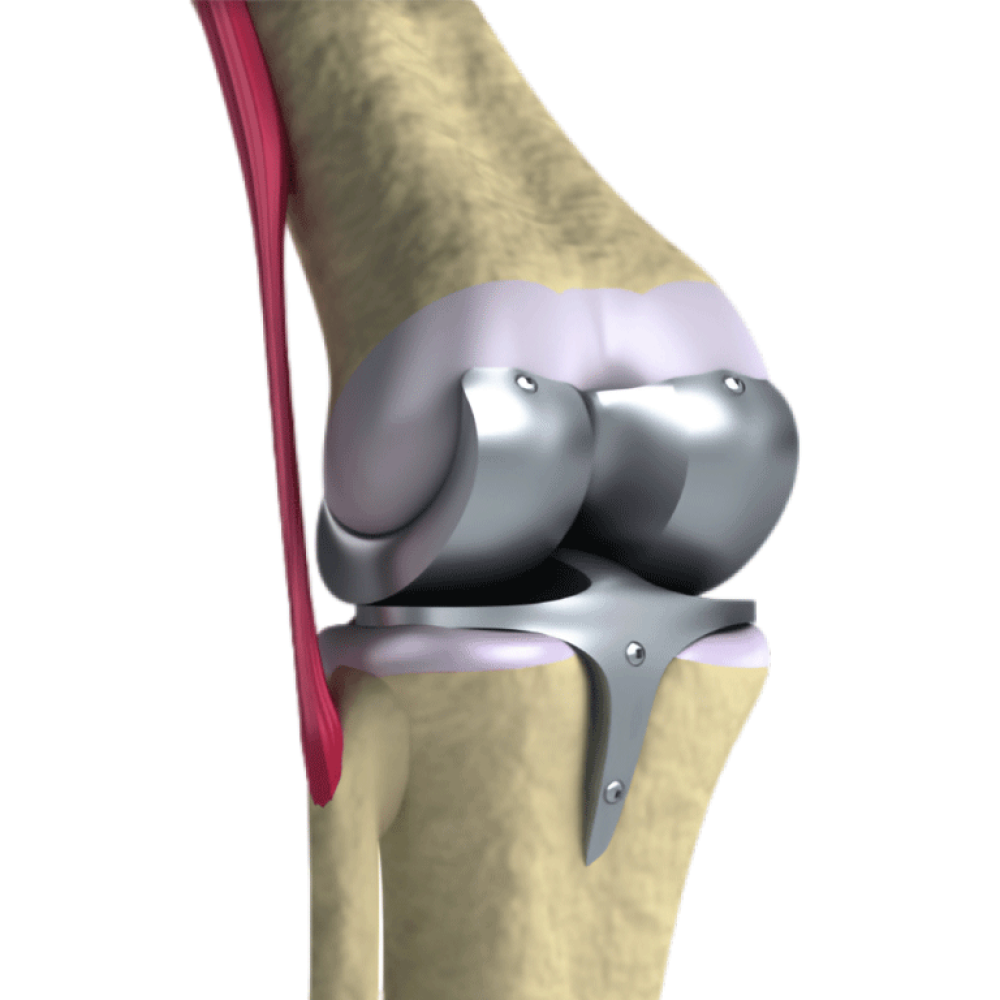JOINT REPLACEMENT

Joint replacement surgery, or arthro plasty, is a surgical procedure where damaged or diseased joints are replaced with artificial components. It aims to relieve pain, restore joint function, and improve mobility, typically for arthritis or severe joint injury.
The surgery involves replacing parts of the joint with prosthetics made from metal, plastic, or ceramic materials. It offers significant benefits such as pain relief and restored movement, enabling patients to resume daily activities with improved quality of life.
Why Choose Sanjeevni Plus Hospital?
Choosing Sanjeevni Plus Hospital means receiving the best care centred around your needs. Dr. Narender Rohilla is a renowned orthopaedic surgeon with extensive training and qualifications in joint replacement surgery. His innovative and patient-focused approach ensures high-quality outcomes. Dr. Rohilla’s expertise in joint replacement surgery is reflected in his high success rates and patient satisfaction scores.
Our hospital is equipped with cutting-edge operation theatres and a dedicated team of specialists, including surgeons, nurses, anaesthetists, physiotherapists, radiologists, and pathologists. Each team member is committed to providing personalised care and ensuring optimal outcomes for our patients.Our multidisciplinary team is dedicated to delivering exceptional care from diagnosis through recovery.
Dr. Rohilla and his team are known for their compassionate approach, ensuring that patients feel comfortable, informed, and cared for throughout their treatment. Focus on long-term recovery and health, with thorough follow-up care to monitor progress and address any concerns promptly.
Types of Joint Replacement Surgeries

Knee
For severe knee pain due to arthritis or injury.

Hip
For severe hip pain from conditions like osteoarthritis.
Despite risks, joint replacement surgery is generally considered safe and effective, with patients experiencing significant improvement in pain relief and joint function. Patients should discuss these risks with their surgeons and follow post-operative care instructions diligently to reduce complications and achieve optimal outcomes.

Shoulder
For arthritis or rotator cuff tear-induced shoulder pain.

Elbow and Ankle
For arthritis-related joint issues in elbow and ankle joint.
Recovery Process
The recovery after joint replacement surgery can vary depending on several factors, including the type of surgery, the overall health of the patient, and adherence to rehabilitation protocols. However, a general timeline for recovery includes:
- Hospital Stay: Patients typically stay in the hospital for a few days to a week immediately after surgery for monitoring and initial rehabilitation.
- Initial Recovery: Most patients start physical therapy and begin to regain mobility within the first few days after surgery.
- Home Recovery: After discharge, recovery continues at home with prescribed exercises and activity modifications. This phase may last several weeks.
- Return to Normal Activities: Patients can usually resume light activities, such as walking without assistance, within 6 to 12 weeks post-surgery.
- Full Recovery: Achieving full recovery, including returning to more strenuous activities and achieving maximum joint function, may take 3 to 6 months or longer.
It’s important to note that individual recovery times can vary, and some patients may experience faster or slower progress. Adherence to the rehabilitation plan outlined by the healthcare team is crucial for optimising recovery and ensuring the long-term success of the joint replacement.
What conditions Require Joint Replacement?
- Difficulty performing daily tasks.
- Severe pain that disrupts sleep.
- Ineffective relief from non-surgical treatments.
- Emotional and mental distress due to chronic pain.
- Ineligibility for alternative treatments.
What are the benefits of Total Joint Replacement ?
- Pain Relief
- Improved Mobility
- Long Lasting Results
- Better Quality of Life
FAQs
Joint replacement involves replacing a damaged joint with an artificial one to alleviate pain and restore function.
Candidates typically have chronic joint pain that isn’t relieved by non-surgical treatments.
Common replacements include hips, knees, shoulders, elbows, and ankles.
The surgery can significantly reduce pain, improve mobility, and enhance the quality of life.
Recovery generally takes 3 to 6 months, with physical therapy playing a crucial role.
As with any surgery, there are risks, including infection and blood clots, but these are minimised through careful monitoring.
Most artificial joints last 15 to 20 years or more with proper care.
Expect a hospital stay for monitoring and a rehabilitation program to regain strength and flexibility.
Most patients can return to normal activities within a few months, depending on their progress.



